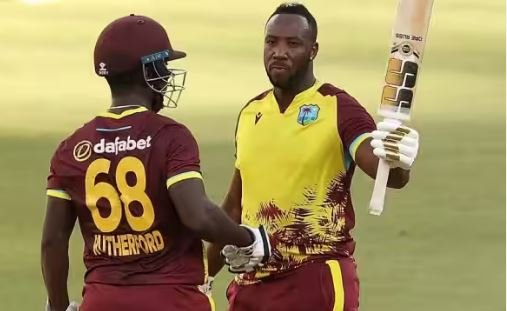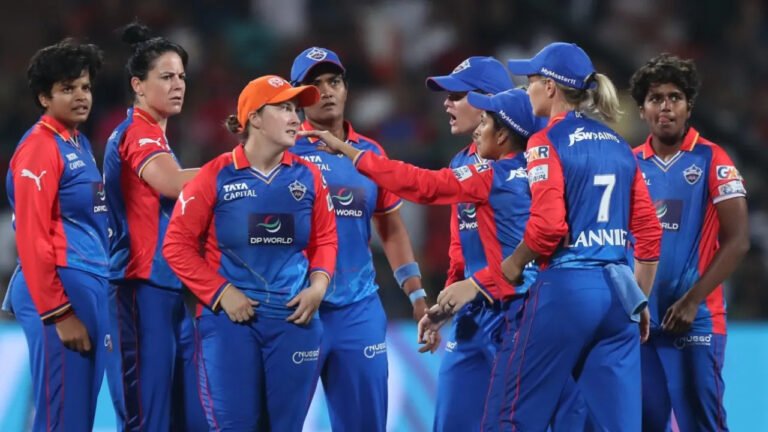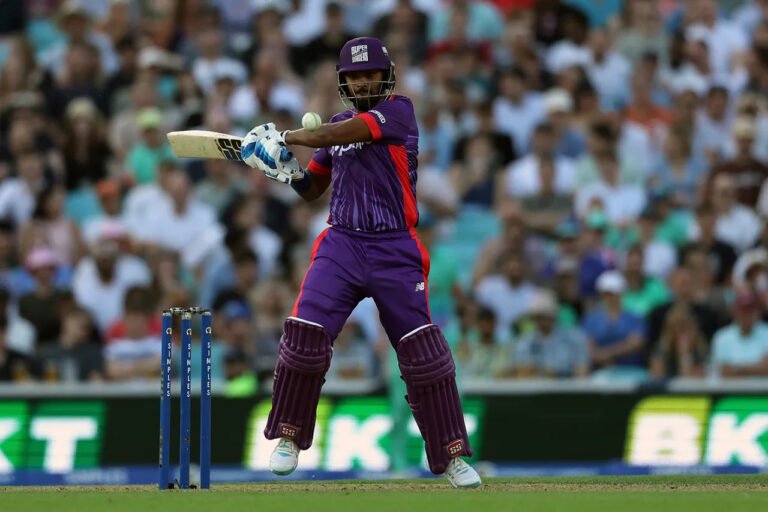India’s Aggressive Play Keeps Second Test Against Bangladesh Alive Despite 2 Lost Days
India’s fast-paced strategy on Day 4 of the second Test against Bangladesh in Kanpur completely changed the course of the contest after two rain-affected days.
Before R Ashwin’s significant breakthroughs put the pressure on Bangladesh, KL Rahul and Yashasvi Jaiswal led India’s attack with scorching half-centuries, creating a new record for the quickest team runs in Test cricket. Despite early delays, there was still a chance for a result after this exciting day.
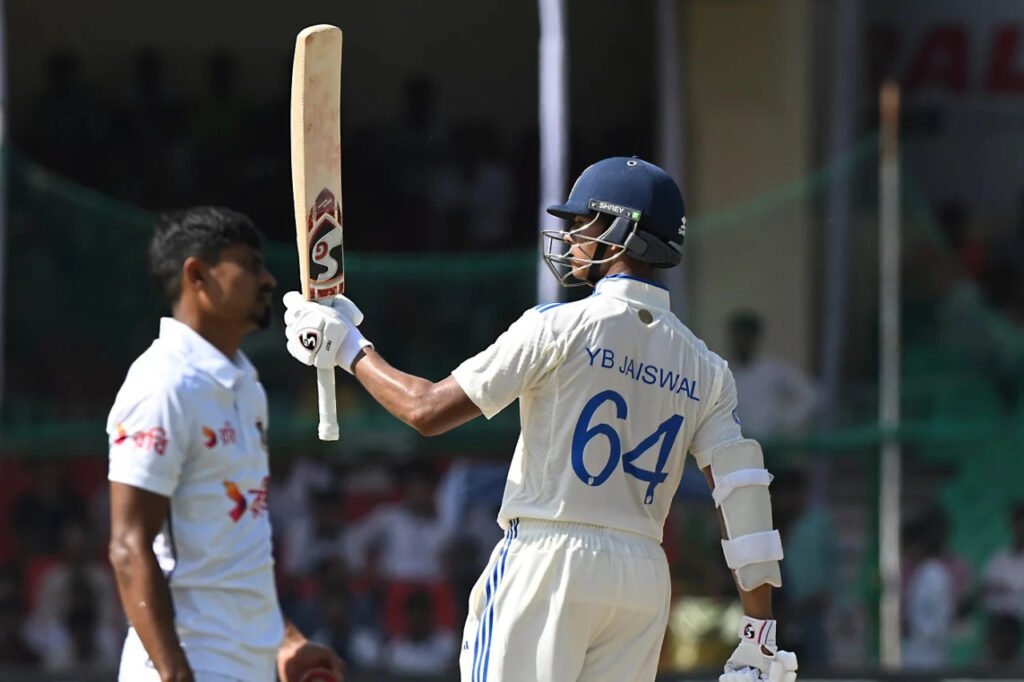
Key Performances and Match Scorecard
Bangladesh 26 for 2 (Zakir 10, Shadman 7*, Ashwin 2-14) and 233 (Mominul 107*, Bumrah 3-50, Akash Deep 2-43) trail India 285 for 9 dec (Jaiswal 72, Rahul 68, Mehidy 4-41, Shakib 4-78) by 26 runs.
Following two soggy, non-cricket days at Green Park, Kanpur came alive on a bright Monday as a swift India smashed several Test records. After smashing 23 off 11 balls in red-ball cricket, Rohit Sharma extended the white-ball cricket blueprint that has brought him tremendous success in the past few years to red-ball cricket. The rest of the Indian lineup then followed suit.
After Bangladesh was bowled out for 233, they used that strategy to achieve the fastest team 50, 100, 150, 200, and 250 in men’s Test matches. They also declared their first innings on 285 for 9 in just 34.4 overs.
By stumps, Bangladesh was down by another 26 runs on the second innings, after R Ashwin had trapped Zakir Hasan leg before wicket and bowled nightwatcher Hasan Mahmud. Shadman Islam also survived a missed opportunity at number three.
This came after, in the final hours of the penultimate day of the Test, Yashasvi Jaiswal and KL Rahul struck quickfire fifties for India, scoring at 141.17 and 158.13, respectively, to give Indian bowlers another opportunity to take aim at Bangladesh’s hitters. On a surface that displayed ample spin, Mehidy Hasan Miraz and Shakib Al Hasan both claimed four wickets.
In the first session, the pitch showed signs of improved carry, with the sun shining after several days of cloudy and rainy weather. However, due to the natural characteristics of the black soil, certain deliveries were a little low.
None of that mattered for Jaiswal, who kickstarted India’s reaction with a hat-trick of fours off Mahmud, who had picked up a five-for in Chennai. On the other end, Rohit struck two sixes off the first two balls he faced. He first leaped down the track to drop a ball over long-on to fast bowler Khaled Ahmed, and then he pulled one into the deep-square leg stands. In just three overs, the duo added two more fours and two sixes to take India to fifty.
Bangladesh came in Mehidy in an attempt to slow down India, and although he was met with a four clubbed past midwicket, he nearly struck fourth ball when Rohit was declared leg before wicket. Despite the ball striking him outside of his line of sight, Rohit reassessed and managed to survive. Mehidy, however, had the final laugh on the following ball when he produced a low-flying delivery that sharply spun back in past Rohit’s defense.
Jaiswal went on the rampage against spin, unfazed by this. In overs six to twelve, India was able to score at least one four. Jaiswal scored a fifty off of 31 balls throughout this method, and India reached 100 in just 10.1 overs. The highlight was a huge he smoked over long-on off Mehidy, who also managed to get the ball to dip in on a fullish length. He used his reach brilliantly to put the spinners off their lengths. But when Mahmud’s length ball stayed a little low to clatter into Jaiswal’s stumps, the surface’s low bounce came into play.
Both Shubman Gill and Rishabh Pant launched early attacks; the former danced down the track and dunked Mehidy over deep midwicket. But with India in full offensive mode, they were killed off by Shakib after tea. India could not be slowed down, though. Bangladesh had been forced back by their aggressive style, and they typically had five or more fielders near the boundary.
Rahul and Kohli took advantage of this to bat and strike freely. Using his feet fearlessly, Kohli activated his ODI mode. Following a mistake with Pant that ought to have sent Kohli back, Khaled underarmed the throw at the striker’s end, but it missed even though it reached the stumps. With no way out of the crease, Kohli had given up.
By hitting him for back-to-back fours, the second of which was a loft over extra cover, he added insult to injury for both Bangladesh and Khaled. Additionally, he countered spin with his feet, hammering Taijul Islam straight across a large distance. However, one skidded through and he was dismissed in an attempt to slog Shakib over midwicket.
Rahul, on the other hand, frequently employed the sweep and reverse sweep and never once faltered. He was comfortable with the somewhat slow speed on the surface and was able to capitalize on any opening. He hit his fastest Test fifty, coming off 33 balls, while putting on a masterclass in batting against spin. But immediately prior to the announcement, India went from 269 for 5 to 284 for 9.
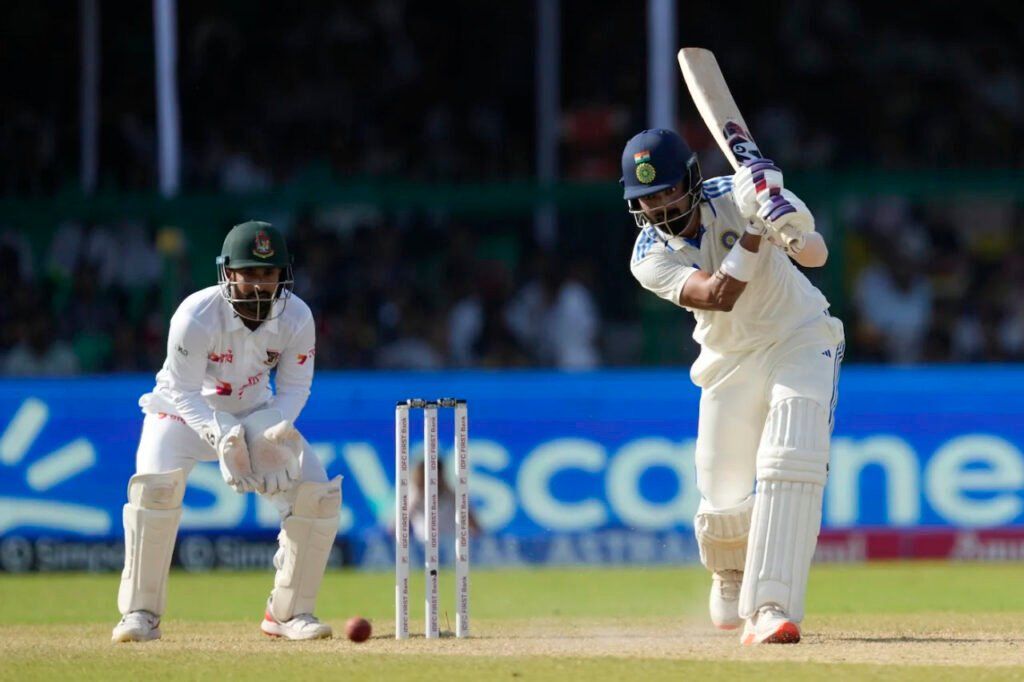
In the first five overs of Bangladesh’s first innings, Akash Deep and Jasprit Bumrah bowled four maidens to start the day. Mushfiqur Rahim’s inside edge provided the lone run during that phase, as both bowlers struck the area at decent length with differing degrees of lift-off. After that, Bumrah got an in-ducker to bounce further and take Mushfiqur’s inside edge for four, but he shouldered arms to knock him over for the next ball.
According to the broadcast, the boundary ball had landed on a respectable length outside off and had veered 2 cm into the batsman; the wicket ball, on the other hand, had veered roughly 6 cm from the same landing position, which had caused Mushfiqur’s error.
Rohit was unafraid to set aggressive fields, and the sight of three slips and two gullies was a regular one for a greater part of the opening session. This created sufficient space for the Bangladeshi hitters to hit fours, which Litton Das did three times off Bumrah in one over.
However, India’s disciplined bowling applied enough pressure, and with some outstanding fielding, Litton fell in an attempt to remove the restraints. He broke off to charge at a length ball from Mohammed Siraj, slapping it skyward towards wide mid-off, where Rohit sprang at the ideal moment to pull off a one-handed blow.
Shakib lasted just 17 balls in the middle, as his attempt to utilize his feet to counter Ashwin proved to be his downfall. If Siraj hadn’t retreated from mid-off and been clinging to a one-handed catch while tumbling backward, he might have gotten away with it.
The only batter from Bangladesh to display resilience was Mominul Haque, who not only scored his second century away from home but also his thirteenth Test century. He well countered spin with the sweep, preventing Ravindra Jadeja from settling. Additionally, he made good use of his feet, lofting him straight over to reach the 90s. On 93 and 95, respectively, Mominul lost two lives as Pant was unable to hold onto an under-edge feather, and on the latter occasion, Kohli grassed him after diving to his left from a wide first slip.
Mehidy had hammered Bumrah for three fours in seven balls after lunch, but the latter got his revenge, forcing him to edge a ball that angled in and sailed away. Then, with Bangladesh losing their final seven wickets for 121 runs, Jadeja caught and bowled Khaled to claim his 300th wicket in Test cricket.


